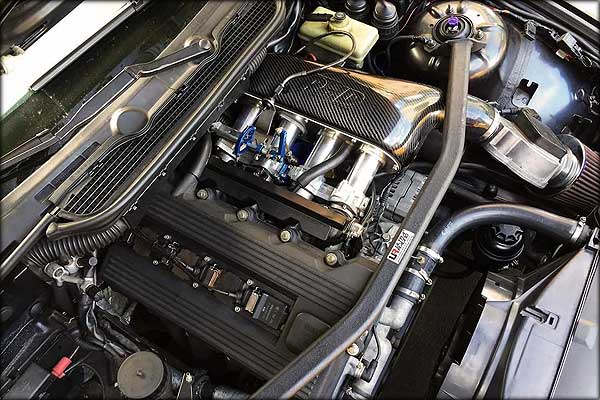From Principle to Truth: A Comprehensive Examination of the Engineering Marvels Driving Automotive Powertrain Advancements
In the realm of automotive engineering, the elaborate internet of innovations driving powertrain evolution is an engaging story that unravels with precision and innovation. bmw engine. From the conceptualization of cutting-edge technologies to their understanding in substantial auto powertrains, a journey packed with design wonders waits for exploration.
Development of Interior Combustion Engines
The evolution of inner combustion engines has been a critical facet in the development of auto powertrains. Over the years, developments in products, producing techniques, and electronic controls have actually dramatically improved the performance, performance, and environmental kindness of interior combustion engines.
One of the essential turning points in this development was the growth of fuel injection systems, which replaced carburetors and enabled a lot more precise control over the fuel-air mixture. Looking in advance, recurring study and development initiatives are concentrated on alternate fuels, hybridization, and electrification to propel the development of internal combustion engines in the direction of also greater effectiveness and sustainability.
Increase of Electric Propulsion Systems
In the realm of vehicle design, a significant shift towards electric propulsion systems is currently improving the landscape of vehicle powertrains. bmw engine. Electric propulsion systems, largely driven by innovations in battery modern technology and ecological issues, are becoming significantly widespread in the vehicle market. These systems offer countless benefits over standard internal burning engines, including greater effectiveness, reduced exhausts, and improved performance capabilities

As car manufacturers remain to purchase r & d, electrical propulsion systems are expected to become a lot more extensive and advanced. The shift in the direction of electrification represents a zero hour in vehicle history, indicating a significant separation from standard combustion engine innovation in the direction of a more reliable and sustainable future.

Developments in Hybrid Powertrains
With the expanding demand for even more fuel-efficient and eco pleasant cars, advancements in crossbreed powertrains have actually ended up being a focal point in the auto market's pursuit of lasting transport solutions. Crossbreed powertrains combine traditional inner combustion engines with electric propulsion systems, supplying improved fuel effectiveness and reduced discharges contrasted to traditional vehicles.
One secret innovation in hybrid powertrains is the advancement of plug-in crossbreed electric this hyperlink automobiles (PHEVs) These vehicles can be charged from an outside power source, allowing for prolonged electric-only driving arrays. Additionally, advancements in regenerative stopping systems have improved the performance of hybrid vehicles by transforming kinetic power during braking into electrical energy to reenergize the battery.
Furthermore, automakers are progressively concentrating on optimizing the combination of crossbreed powertrains with innovative transmission systems to further enhance total effectiveness and performance. The usage of light-weight products and advanced control systems has likewise contributed to making hybrid powertrains a lot more effective and small. On the whole, the continual advancements in hybrid powertrains are leading the way for a much more sustainable future in the automotive industry.

Assimilation of Software and Connection
Progressing the automotive industry's technological landscape, the integration of software application and connection plays a pivotal role in enhancing car efficiency and user experience. Modern cars are progressively ending up being interconnected environments, where software-driven functionalities are effortlessly incorporated with connectivity functions to supply a more satisfying and reliable driving experience. Software application manages vital elements of the automobile, such as engine monitoring, transmission systems, and progressed other driver-assistance systems (ADAS) These systems depend on intricate algorithms to maximize efficiency, make sure security, and decrease exhausts.
Connection additional enhances this assimilation by enabling cars to interact with exterior networks, other vehicles, and framework. With features like remote diagnostics and over-the-air updates, makers can continuously enhance car efficiency, address issues promptly, and present new attributes without needing physical recalls. Additionally, connection enables sophisticated functionalities like real-time web traffic updates, remote vehicle tracking, and smooth combination with mobile phones for improved ease.
Future Trends in Automotive Propulsion
The development of auto powertrain developments, specifically in the integration of software application and connectivity, establishes a structure for exploring the future fads in automotive propulsion. Looking ahead, crucial fads are emerging that are poised to change the automotive market. One prominent pattern is the boosting change towards electrification. As concerns concerning climate change and environmental sustainability expand, electrical cars (EVs) are coming to be more prevalent. Makers are spending greatly in developing EV innovation, causing innovations in battery efficiency, range, and billing infrastructure.
These vehicles may need distinct powertrain setups to support numerous levels of autonomy. In addition, the combination of synthetic knowledge (AI) and maker learning in automobile propulsion systems is expected to enhance performance and efficiency.
Verdict
To conclude, the continuous advancement of vehicle powertrains has actually seen the growth of internal burning engines, electric propulsion systems, crossbreed powertrains, and the integration of software application and connection. These developments have driven substantial improvements in efficiency, performance, and sustainability in the auto market. Looking in advance, future trends show a continued change towards electrification, independent driving, and connectivity, shaping the future of auto propulsion systems.
The development of inner combustion engines has actually been a pivotal facet in the improvement of vehicle powertrains.In the world of automobile look at here design, a significant change towards electric propulsion systems is presently reshaping the landscape of car powertrains. On the whole, the continuous improvements in crossbreed powertrains are leading the means for a much more lasting future in the auto industry.
The evolution of automobile powertrain advancements, especially in the assimilation of software and connectivity, sets a foundation for discovering the future fads in automotive propulsion.In conclusion, the continuous development of automotive powertrains has seen the development of internal combustion engines, electric propulsion systems, hybrid powertrains, and the combination of software application and connection.